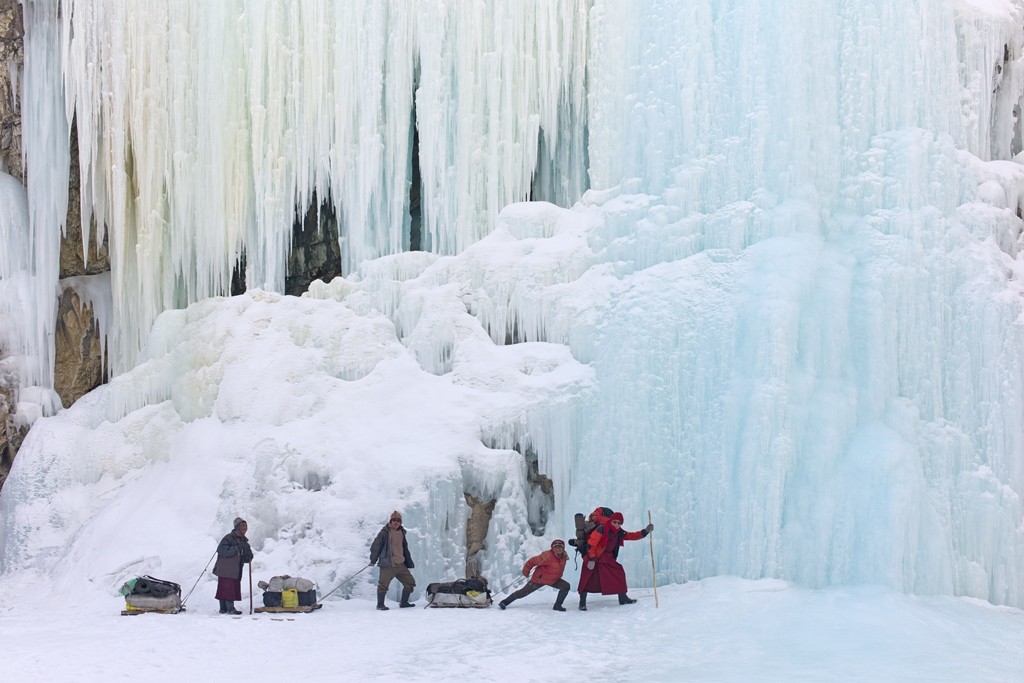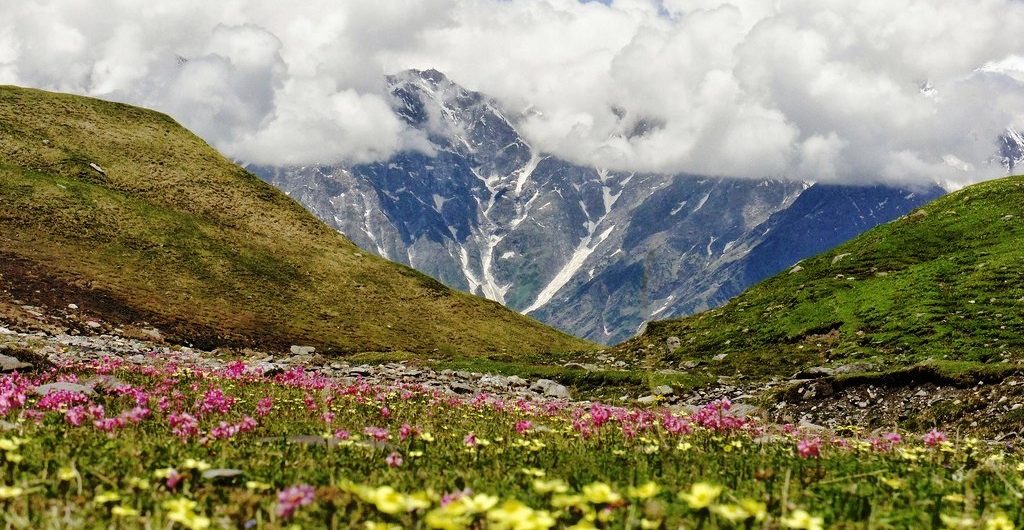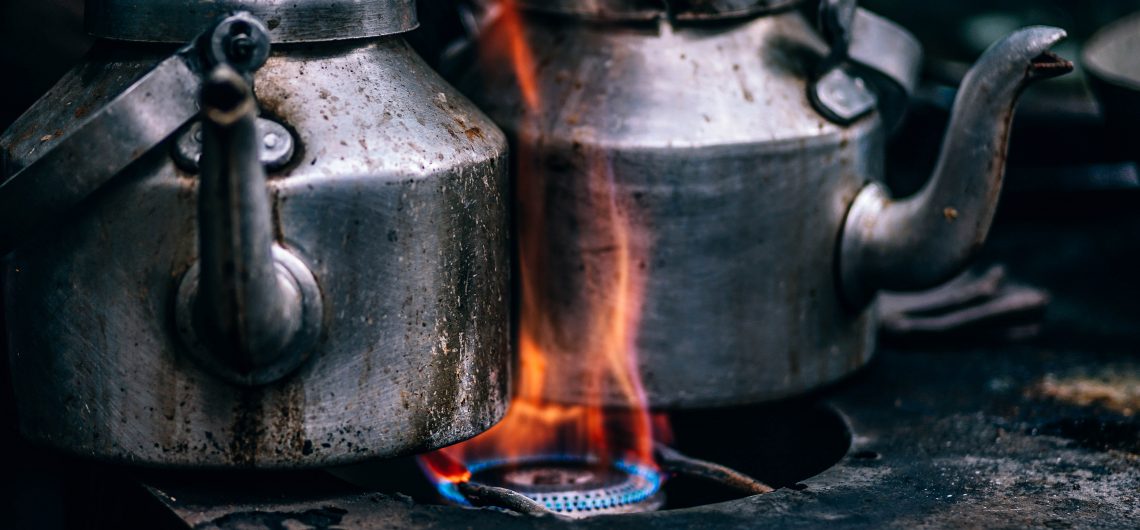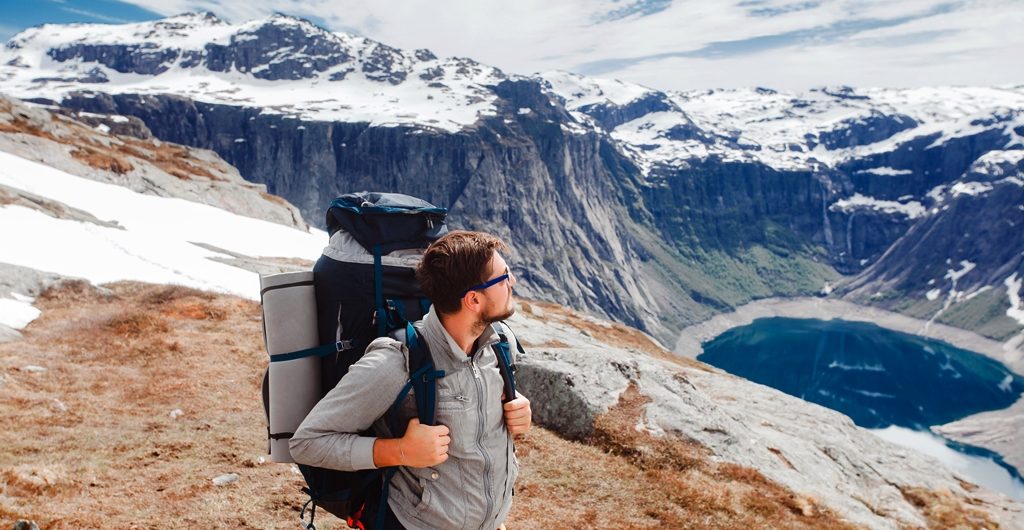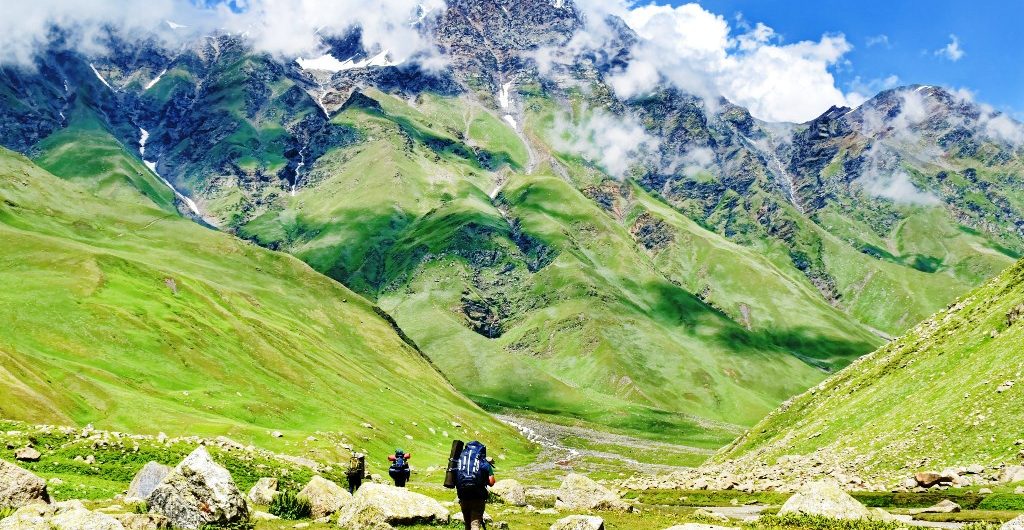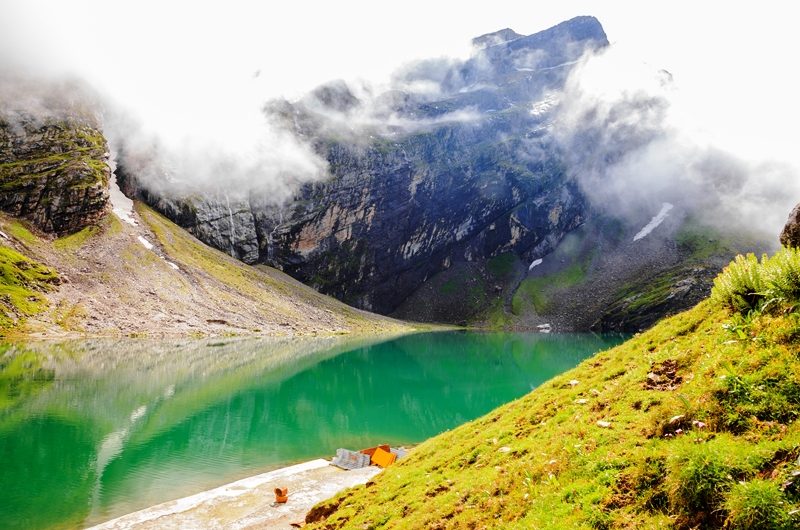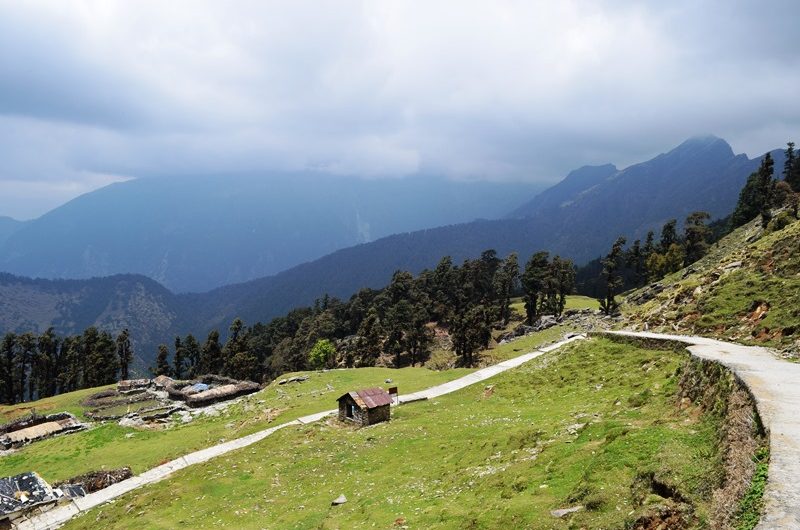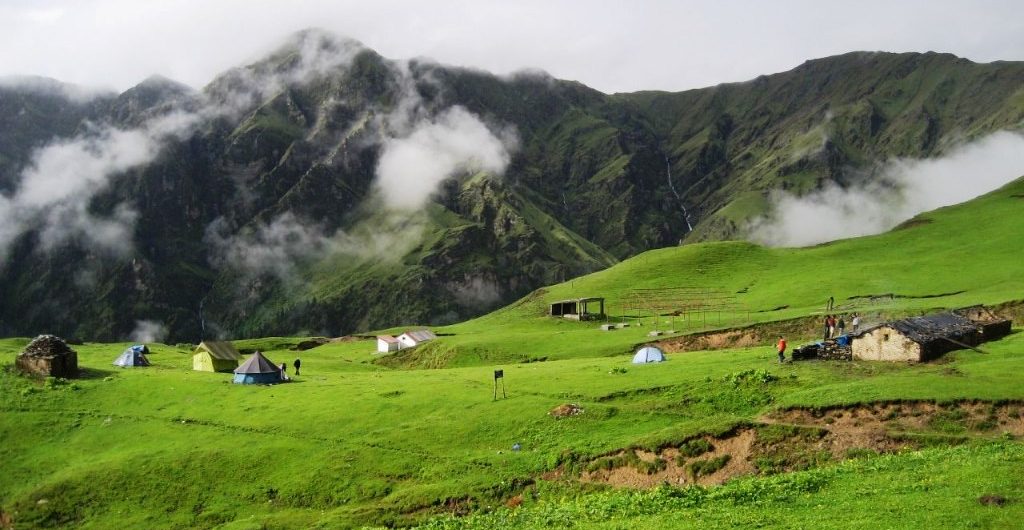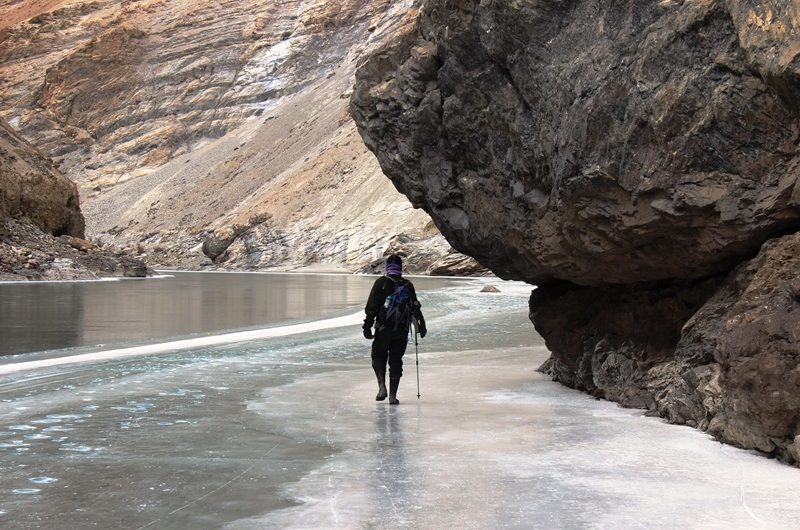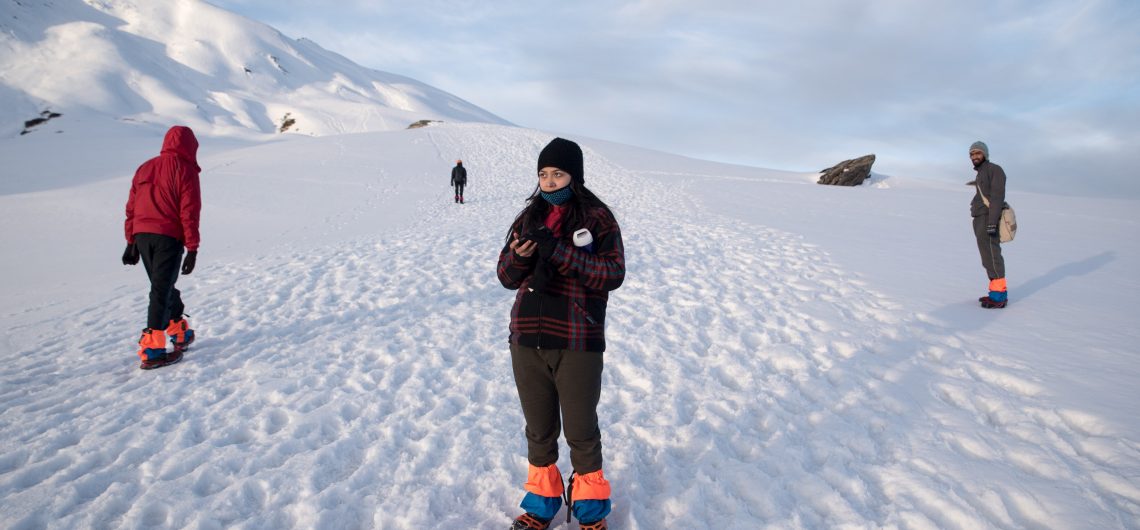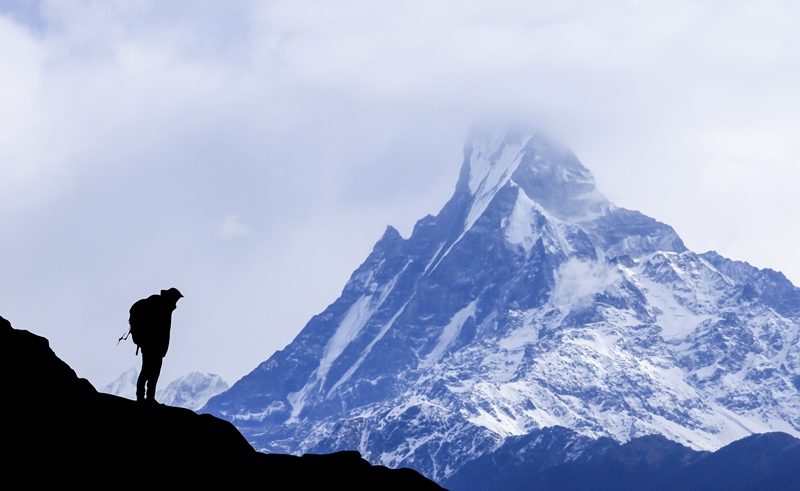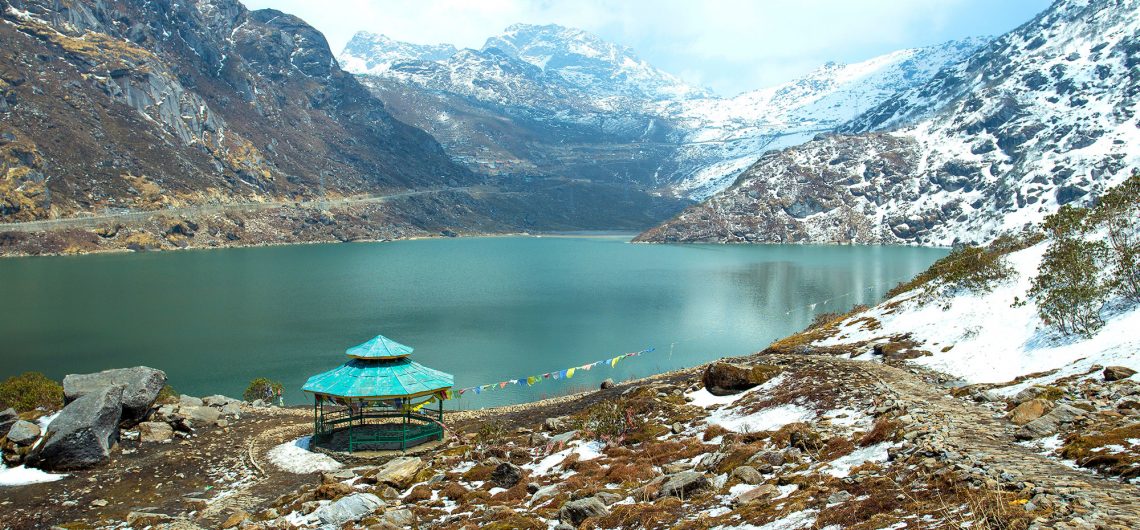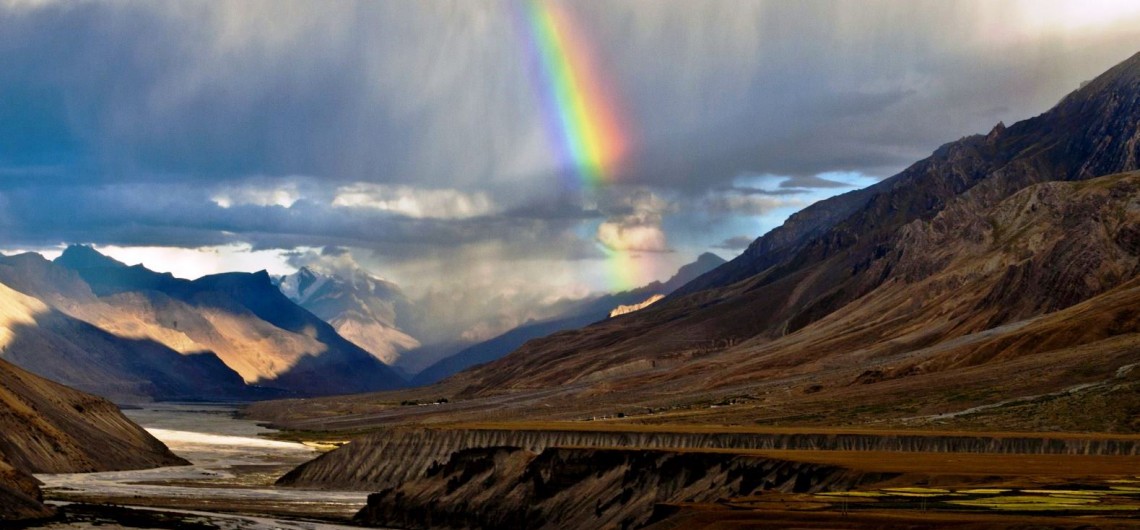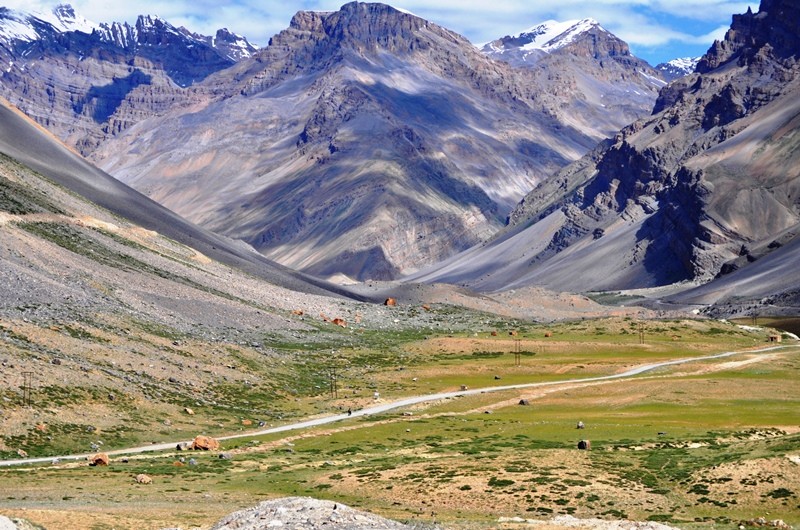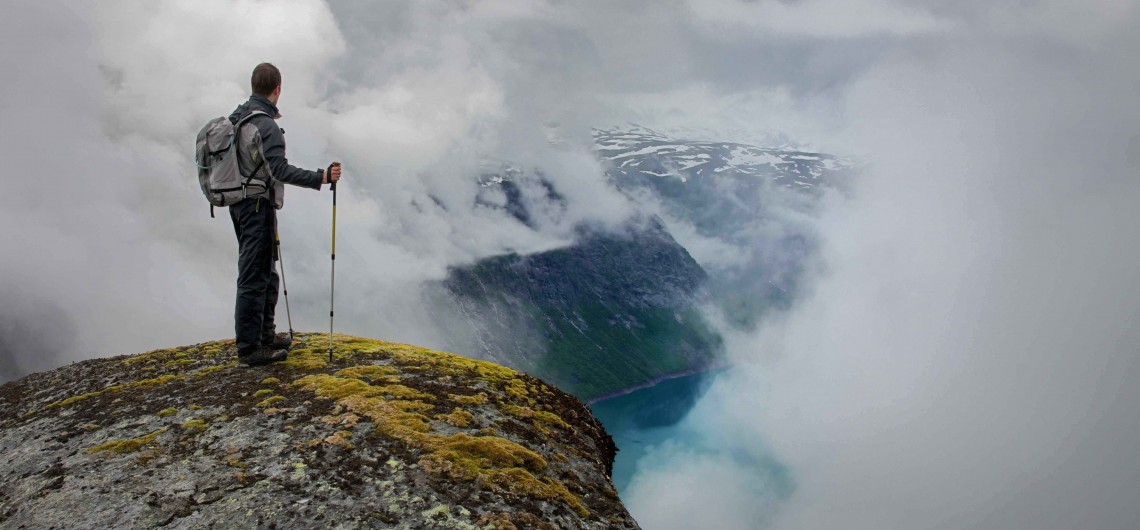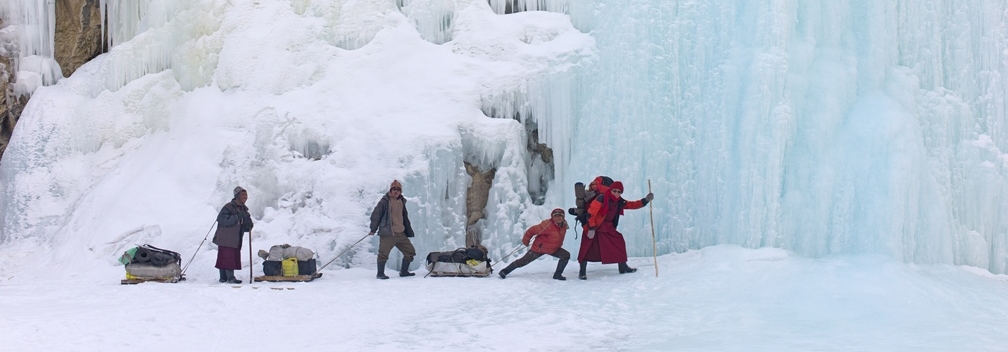I associate May, especially the May of North India (non-Himalayan regions) with searing heat, dryness and perpetual sweating. But, as they say, “Every cloud has a silver lining”, May is also the time when most schools close for vacations and you finally have the time to go someplace. Most of us visit our grandparents and sit in their house, often doing nothing. I personally never liked going to Lucknow and staying there for 1-1.5 months. We hardly ever went out because it was hot; even after the sun set, there was little respite. The only silver lining there was that I had a cousin, with whom I would run around the house or play cricket in the backyard, but we grow up after a while and feel no excitement in such things.
Did you know tea drinking in India was prevalent since 750 BC? However, it was not tea per say, but more of a vegetable dish that consisted of tea leaves, oil and garlic. Technically, India was introduced to tea by some officers of the British army, who started tea cultivation here with seeds brought from China. This led to a revolution, and by the end of the 19th century, tea produced in Darjeeling and some parts of Assam were exported to different parts of the world, especially Britain. Slowly and steadily, this revolution spread across the entire Himalayan foothills and other parts of the country.
What goes in your mind, when you read about someone else’s adventurous trekking expedition, especially in the Himalayas? Do you hear an inner calling? Does your heart and mind tell you that someday, you too should do this? Then, what is stopping you? Every year, thousands of amateur trekkers go on their first expedition into the Himalayas. All that one requires is a basic physical fitness level, necessary trekking equipment, a bit of mental strength and loads of zeal. We have listed down a few trekking trails in the Himalayas that are perfect for beginners like you. Read on to know about them so that you can start planning your impending desire to trek in the Himalayas.
Life is a journey. In this long voyage, you meet people, make acquaintances and then continue on your way. But, some people are such that their memory remains with us forever. The same can be said about places. You visit tens and hundreds of places in your life, if not thousands, but the memory of only a few of those stays. Bhabha Pass in the Spiti Valley is one such place, a trip to which one just wouldn’t forget.
The beauty of the Himalayas lies not only in its majestic snow-clad peaks, but also in its indigenous people and wildlife…also in its rugged terrains, and breathtaking rivers and lakes. And to witness these facets of this region, nothing can better than a trekking expedition! So, if you are planning a trip to this part of the world, then be ready to indulge in some adrenaline-pumping trekking action.
Little did I know that my short adventure trek to Chopta Tungnath Chandrashila will turn out to be the adventure of a lifetime! I could so much relate to a quote that I read recently by Lin Yutang, “No one realizes how beautiful it is to travel until he comes and rests his head on his old, familiar pillow”. But for me it was more like an adventure which I survived and at that moment all I wanted to do was to go home and be warm and comfortable!
The only reason that this trek is so close to my heart and I will remember it forever is because I remember how I almost gave up! I gave up on walking further, to save myself from all the pain. It’s good to travel in a group sometimes. If I was on a solo trek I would have been stuck somewhere in the mountains. Not that I mind that, but I would have been surely hopelessly lost!
It is highly unlikely that you don’t like Hindi movies. And if you have seen those typical love stories of the 90s, wherein Switzerland was a rage as an outdoor location, you must have also seen lush pastures, with the backdrop of mountains. The blog has nothing to do with Switzerland. I’m just giving you a premise to what I am about to tell you ahead. Back to the blog,there may have been times that the Swiss countryside shown on TV seemed so pretty that it made you want to go there. If you ask me, it doesn’t make sense to take an international trip just to see an alpine countryside, but if you really want to see such places, there are ways.
“May your trails be crooked, winding, lonesome, dangerous, leading to the most amazing view. May your mountains rise into and above the clouds.”
This is what the noted author, Edward Abbey has quoted for trekkers and mountaineers. Perhaps, we can consider this as the ultimate wish of a true adventuresome soul.
More demanding the trail, more would be the thrill. As simple as that…!! This specific mindset boosts trekkers and mountaineers to search for more gruelling trekking routes. Indeed, this keeps them exploring new destinations that are actually more strenuous to cover. And if a trek on such routes is accompanied by some of the most astounding vistas of charming surroundings, then the overall experience becomes more rewarding.
Our routine during winters is lying in bed, curled up in a blanket in front of the television. Year after year, this is how we have spent our winters, and especially our winter vacations. I know it’s not just me, who has been living like this, there’re plenty of others too. But, it’s not our fault! I guess it’s just that there is nothing motivating us to get out of our cocoons, leaving those thick blankets behind, to do something. A few days ago, one of my long-time friends asked me what I was doing during this winter vacation, and this got me thinking. I had no answer for my friend at that moment, but I was in search of it, soon after that.
October is a truly magical time, when the long summer days begin their transition into long winter nights. The trees shed their leaves, almost as if they are getting rid of the old in order to welcome new life. You must remember those heart-warming images, pre-installed in our computers, of gardens, almost entirely covered by reddish-brown leaves, that’s the majestic autumn at its very best. This period is often referred to as post-monsoon in India. During this time, a continuous breeze blows, which may give us slight chills, but also bring pleasure to our soul.
The end of monsoon is here and winter’s on its way. It’s time again to plan a date with the Himalayas. After exploring the majestic Trishul, Nandaghunti and Dhauladhars in Uttarakhand and Himachal in the summers, it is high time we should look east. By east we mean North-east. And there is no better way to explore Eastern Himalaya than to trek to Goecha La Pass. This trek route brings you up and close to Kanchendzonga Mountains like no other. Kanchendzonga or the sleeping Buddha is the tallest mountain in India and the third highest in the world. Trust me when I say that this trek will surpass all your expectations. The mountains are higher than you have ever seen; the climbs harder than what you have done so far and the weather much colder than what you have experienced so far!
That is why it’s my pleasure to list out a few things to keep in mind to best prepare for Goecha La Trek
Know the trail
The Trek is generally moderate since we climb up to 16000 feet. The trail goes through moss covered forests of chestnut, oak, maple, pine, and magnolia and last, but by no means least, the most popularly known Rhododendron trees. We explore the rich bio diversity of the diverse forests throughout the trekking trail. If lucky you may spot many beautiful birds like Red Billed Leothrix, Rufous vented Yuhina, Fire breasted Flowerpecker, and Silver eared Mesia and many others. One encounters not just Mt. Kanchendzonga but also gets a close up view of Mt. pandim, Kabru and Simovo. It is a perfect place for a naturalist and a mountain worshipper. So keep your cameras ready and a writing pad if you would want to take notes.

Preparation for the best experience
One must remember that it is a trek that goes through tough terrain, so one must be physically and mentally strong to complete this, as in a span of 8 days one walks for about 90 odd kilometres. Especially on the day you cross the Goecha La Pass, it gets long and tiring. One must be able to sustain for about 12 hours of trekking.
In order to make sure that you have the right amount of fitness required for this trek, it is recommended to do cardio exercises like jogging, climbing stairs, and cycling on regular basis. One must attempt to jog 5 kilometres in 30 minutes. If planning to walk on a treadmill, try it on inclined mode for the desired results.
Apart from cardio exercises, one must do regular stretching exercises which will help build the calf, shoulder and hip muscles. It will not be easy to tread on steep slopes no matter how light your backpack. It will cause immense strain to the lower back and hip muscle. Hence a bit of strength building exercises will land you in much better shape on the trek.
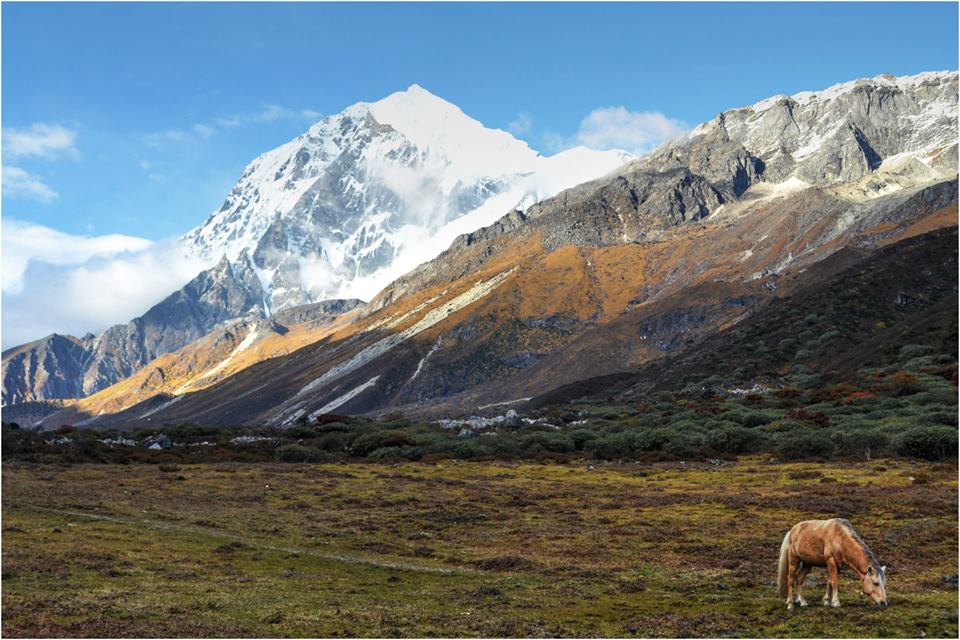
Lastly, if anyone is into yoga, then Pranayama and Asanas really help in fighting Acute Mountain Sickness.
How to pack right
Packing for a trek in summer varies from what needs to be packed for a winter trek. Goecha La in September and October will be much colder than in May. Hence one should pack extra carefully. In post monsoon season, the challenge is mostly with the chilled winds from which we must protect ourselves. Chances of snow, once at the pass, will be there. There might be chances of snow fall on the route as well.
Absolute essentials
- Good quality Trek shoes
- Rucksack not weighing more than 8 kgs
- Clothing in layers – light layers as in full sleeved collared t-shirts with a fleece jacket topped with hollow fill jacket. A Balaclava, water resistant gloves, woollen socks for the nights and cotton socks during the day
- Accessories – Head torch, Sunglasses, toilet kit consisting brush, tooth paste, sun screen lotion, hand sanitiser, trekking poles, water bottle
- Personal medicine kit – should have medicines for fever, cold, stomach upset, acidity, headache, pain killer, Band-Aids
- Miscellaneous – Tissue paper, plastic bags for carrying waste, day pack
- Original and photocopy of government photo identity card (There is no place in Yuksom to get print outs and photocopies)
- Two passport size photos
- Foreigners need to obtain ILP (Inner Line Permit), which you can get outside Bagdogra airport or at the check-post before entering Sikkim from Silguri
- Medical Certificate and Disclaimer (to be filled by the trekker)
- Medical certificate (to be filled by a doctor)
Goecha La – Fun stories
The trekkers hut at Lamuney is considered to be haunted. Many trekkers have had weird experiences while spending a night at the trekkers hut. As far as the stories go, a trekker once was woken up by a strong push on his chest in the middle of the night and when he opened his eyes he saw nothing but felt someone sitting on his stomach. The feeling lasted for some minutes and warded off on its own. Spooky huh? Don’t worry; you get to stay in tents not in the hut 🙂

The day of the cross over to the Goecha La pass from the campsite Lamuney will be the most memorable day of your life. Typically you begin at midnight around 2 AM under the guidance of the starry night sky and ice cold air for your company to reach the first spot from where you get to view the sun rise over Kanchendzonga up-close. The story will not be over at this spot. It is only the beginning. There are many myths about viewpoints in this trek. They are all unique points from where one gets jaw dropping views of the mighty Himalayas. One completes the trek only after reaching the green glacial Goecha Lake. People should not confuse this lake with the Samiti Lake which comes much earlier on the route while coming from Lamuney. The Goecha Lake is the start of Goecha La. It is from this point that you get the views of not just Kanchendzonga but also Mt Pandim, Simovo and the mighty Goecha Peak. It is this place which can be truly called the stairway to Kanchendzonga.
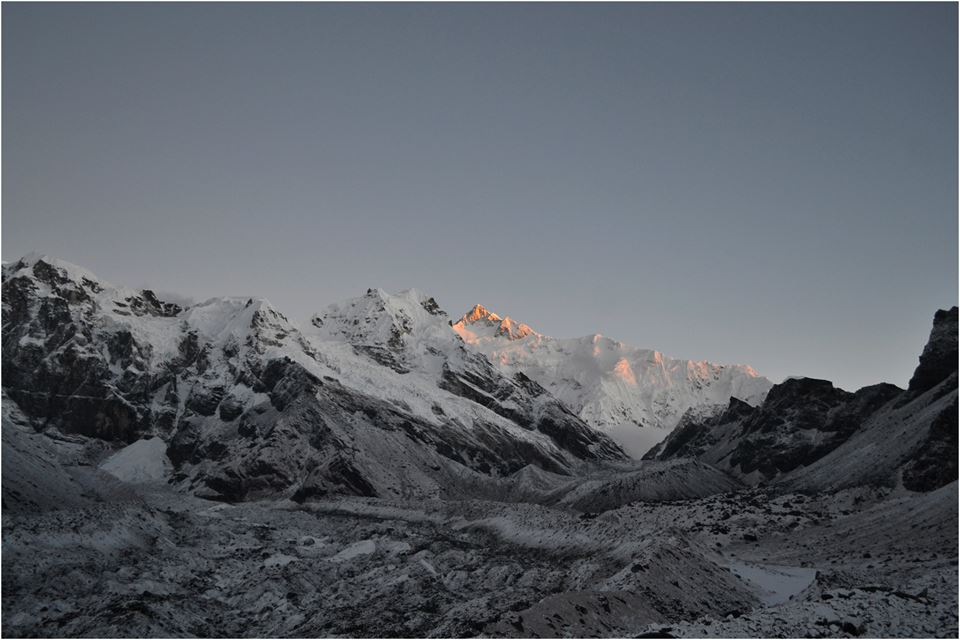
Lastly, Goecha la is a trek very dear to my heart and I insist all to do this trek if intrigued by Eastern Himalayas. No other moderate level trek takes you so close to the mountains that you could feel like you can reach out and touch them. All the fun, thrill and adventure are hidden in the last days of the trek. Ensure to go for it and stay at it!
Updated on: June 9, 2020
What comes to your mind when I say the word, ‘August’? Let me tell you what comes to my mind. As soon as I hear this word, I think of heavy rain showers, cool breeze and greenery. The idea of trekking in August, usually when the monsoon is at its peak, came to my mind when my friend commented in one of our conversations, “You don’t go for trekking during the monsoon!” My spontaneous reply to him was “Why not?”, and then he was silent.
The question sure may have got him thinking, but I was thinking a lot about it too. Why do people not go for trekking in August, which is only beautiful and soothing? That day, as soon as I reached home, I started researching on “trekking in the monsoon.” My search made me realise something.
Exciting Treks in August Click Here to Explore!
The scenery of sky-piercing mountains, with a radiant sun shining in the backdrop, only soothes one’s soul. The view makes you forget every little stress of your hectic life and brings you immense peace. For such an experience, you do not have to travel too far. A flight or drive towards north, and you are here. I am talking about, of course, the eternally serene and surreally beautiful Spiti Valley. If you don’t trust me, and why should you, you haven’t even met me, will you take a respected novelist and poet’s word? Rudyard Kipling, the English writer, said the following words about the majestic place: “…a world within a world” and a place where the gods live.” Of course, this was a long time ago, about hundred years, but the place hasn’t changed since. It is still drenched in that same elegance as during that time. It is almost like none of the advancements in the rest of the world, or any person, place or thing have been able to touch and influence its tranquillity.
The three months of monsoon with heavy rains and humidity are the most irritating time of the year, especially if you stay in those polluted cities. Before you can dry yourself with a towel after bathing, the humidity and sweat negates everything. You don’t feel like going out because the roads are all flooded as are parks and grounds. I always get the urge to leave home and go some place, where rains can be enjoyable. You will never believe what I found on the internet while searching for ways to spend the monsoon away from all the fuss. I found that I could go trekking in the Himalayas! Now, many believe that trekking is not a monsoon activity, but there are several hikes in the Himalayan Region that are specially meant for the rainy season. So, keep reading to learn about some incredible places you can trek to if you want to escape the fussy rains. Explore these monsoon treks in the Himalayas and take an experience of a lifetime!
Hampta Pass – Himachal Pradesh
A moderate level hike with a maximum altitude of around 14000 feet, it will take you to a surreal meadow with snow-capped peaks in the background and colourful flowers on the valley bed. Increase the fun by trekking further to Chandratal.
Travelling is a pleasure, when you want to spend some time with yourself away from the city life inhaling the fresh mountain air while hiking in the woods, walking through fragrant orchards, lazing around and feeling the warmth of the sun.
But if your idea of travel involves some adventure and taking the off-beat track, then a trek is all you need.
If you want to explore Himachal beyond Shimla and Manali and move beyond Dehradun and Mussoorie, see Ladakh beyond Leh and Sikkim beyond Gangtok, then stretch your leg muscles and get ready to venture into these 10 beautiful picturesque Himalayan treks across India. What could be more stress- busting and soothing than experiencing these breathtaking views?
As Ruskin Bond has said, “The adventure is not in arriving, it is in the “On the way” experience. You are not choosing what you shall see in the world but giving the world an even chance to see you.” So pack your bags and embark on these 10 most picturesque Himalayan treks across India.
Chadar Trek: Ladakh, Jammu and Kashmir
One of the most challenging treks as it involves walking on the ice-sheet of Zanskar River. Chadar trek is not only a miscellany of adventure, but also melody of emotions. You will be awestruck when you see the frozen river, icy caves, unusual campsites, frozen waterfall and changing of the colour of the ice bed of Chadar. The trek became famous when pictures of Buddhist monks walking barefoot on the frozen river in -30 degree temperature went viral.
